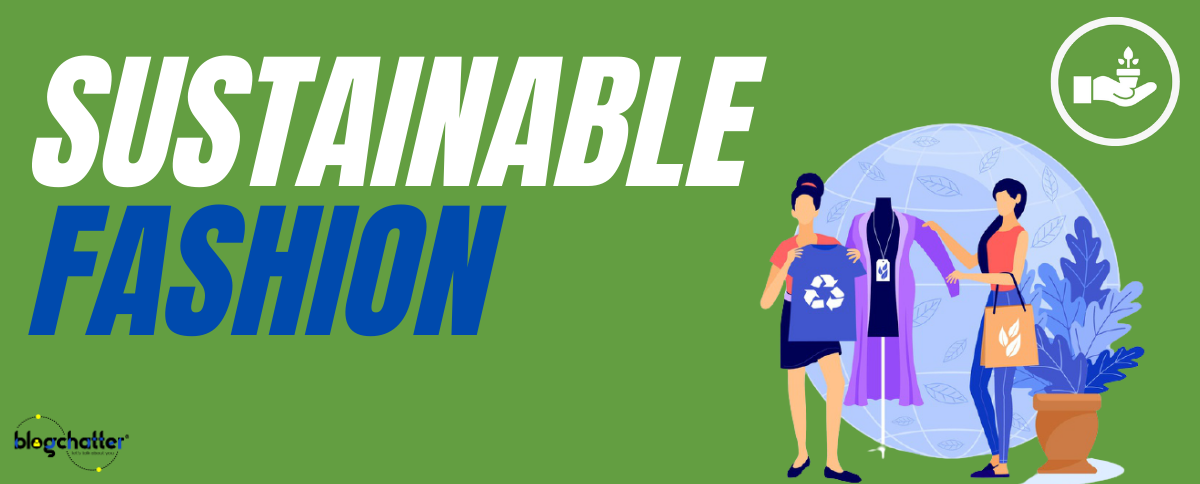When we think about fashion, words like glamour, style, trend immediately strike the mind rather than words like sustainable, eco-friendly or ethical. However, in the coming years, the most important question the fashion industry needs to ask is how sustainable it really is.
The word sustainable is defined as “capable of being sustained”. A sustainable fashion industry is one that must operate in ways that can continue working for years and decades to come. Despite the growing interest in sustainability issues within the fashion industry, currently there is no common definition of what sustainable fashion actually means. Does it mean local production, emerging designers, rented clothes, organic cotton, or clothing made from recycled bottles?
Well, let’s get the bad news out of the way first: there is no such thing as 100% sustainable fashion. There are a few reasons for this. For example, washing clothes infuses nature with microfibers. It also takes a toll on the environment through the use of water, electricity, and most laundry detergent is not eco-friendly. While brands like Mama Earth are taking initiatives to create plant-based environment friendly laundry detergent, not many are following suit as of now. Therefore, while it’s impossible to give up “fast fashion” completely and be 100% sustainable, what we can, and should, work towards is 'more sustainable' fashion. This can be defined as clothing, shoes, etc that are manufactured, marketed and used in the most sustainable manner possible, taking into account both environmental and socio-economic aspects.
In practice, this implies continuous work to improve all stages of the product’s life cycle, from design, raw material production, manufacturing, transport, storage, marketing and final sale, to use, reuse, repair, remake and recycling of the product and its components.
From an environmental perspective, the aim should be to minimize any undesirable environmental effects of the product’s life cycle. This can be done in various different ways.
(a) ensuring efficient and careful use of natural resources.
(b) selecting renewable energy sources (wind, solar, etc) at every stage, and
(c) maximizing repair, remake, reuse, and recycling of the product and its components.
Let’s look at an example of a brand that has recently made changes to make their products eco-friendlier: Denim is notorious for requiring huge amounts of water to create one pair of jeans, but Levi’s new collection, WaterLess, uses up to 96% less water. For this and all of its products, Levi’s is committed to sustainability through the entire design and manufacturing process, including working towards 100% sustainably sourced cotton and recycling old jeans into home insulation.
From a socio-economic perspective, all stakeholders should work to improve present working conditions for workers on the field, in the factories, transportation chain, and stores, by aligning with good ethics, best practice and international codes of conduct. In addition, fashion companies should contribute to encourage more sustainable consumption patterns, caring and washing practices, and overall attitudes to fashion.
It's important to understand that there are two perspectives to sustainable fashion: that of brands and that of consumers.
-
For brands it means creating in a way which is most considerate of humanity and the environment. The goal is to have a system which works without leaving a negative footprint.
-
For us as consumers, this means thinking about what we buy, knowing which philosophies we are supporting through our purchases, and also asking ourself if we're really going to wear that new piece to the extent that it was worth being made.
Let's discuss briefly the few approaches we can take while rethinking our wardrobe moving in the direction of more sustainable fashion. Clothing swaps and buying second hand (or thrifted) items seem to be the most popular approaches and are also considered 'trendy'. Sounds like the best of both worlds, doesn’t it?
Additionally, here are some things to look out for, to slowly make your wardrobe greener as you add new things to it:
1.png)
It is essential to realise fashion is a consumer-facing industry, and in this, consumers have real power—power to be vocal about their expectations. Companies listen to what we, the consumers, demand. So, the good news is we can actually play a crucial role in cleaning up the industry. Whether one prefers to renew their wardrobe often or more sporadically, Green, Clean, Fair & Ethical are important choices to consider when purchasing new clothing. Buying clothes that are manufactured in an environmentally and socially/ethically conscious manner is something we all should aspire for as much as possible.







Comments
Well researched post and have beautifully brought out the true meaning of sustainable fashion.
Sustainable clothing and fashion are two separate terms that have gracefully been merged here. Understanding sustainable fashion is your subject here, and your mention about clothing swaps that is a part of sustainable clothing, which European countries follow, must be encouraged in a larger way in other developing countries. An eye-opener, and a wonderful subject. Brands boasting of sustainable clothing is already their USP.
I've been looking for resources on sustainable fashion, so this post was very useful. I wonder if you have any brand recommendations?
This is so well-researched, Sachika.